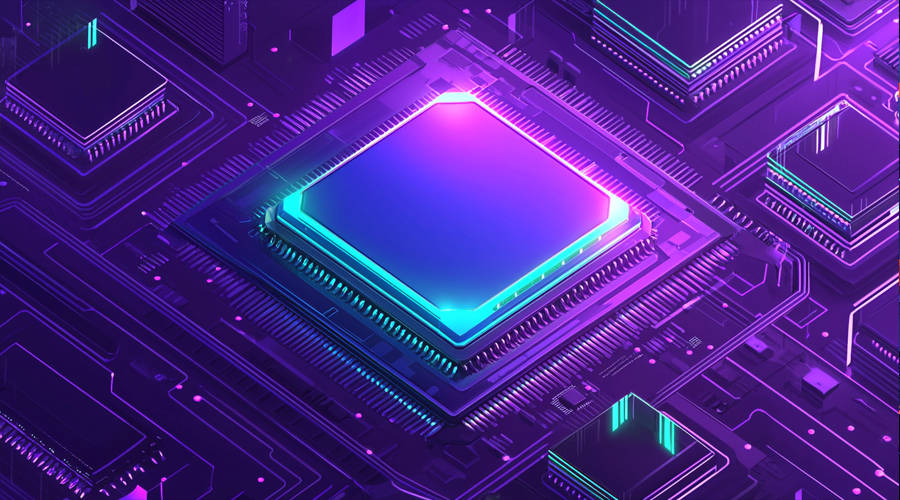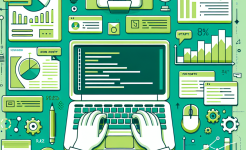TR (Technical Review) is a crucial process in product development, especially within the framework of Integrated Product Development (IPD). It serves as a checkpoint to assess the technical aspects of a product at various stages of its development lifecycle. The impact of TR review extends far beyond just evaluating technical feasibility; it significantly influences team collaboration. When a team undertakes a TR review, members from different disciplines such as engineering, design, and testing come together. This convergence of diverse expertise creates an environment where ideas are shared, and perspectives are exchanged. For example, in a software product development project, the TR review might involve programmers, UI/UX designers, and quality assurance engineers. The programmers can share the challenges they face in coding, while the designers can provide insights into user experience requirements, and the QA engineers can highlight potential testing bottlenecks. This interaction not only helps in identifying technical issues early but also strengthens the bonds among team members, enhancing overall collaboration.
Moreover, TR review acts as a catalyst for continuous improvement within the team. By analyzing the results of the review, teams can identify areas where processes can be refined, communication can be enhanced, and skills can be developed. For instance, if a TR review reveals that there are frequent misunderstandings between the hardware and software teams regarding interface specifications, the team can take steps to improve communication channels, such as establishing more regular cross-functional meetings or creating a shared documentation platform. This iterative process of identifying problems and implementing solutions based on TR review findings drives the team towards better performance and product quality.
Impact on Team Collaboration
Knowledge Sharing and Cross - Functional Learning
TR review provides a unique platform for knowledge sharing among team members. In a typical product development team, different members possess specialized knowledge in their respective fields. During the review, these experts get an opportunity to explain their work to others. For example, in an automotive product development project, the engine engineers can explain the latest advancements in combustion technology to the electrical engineers and the design team. This sharing of knowledge not only broadens the understanding of each team member but also enables cross - functional learning. The electrical engineers might gain insights that could help them in designing more efficient power systems for the engine, and the design team could incorporate the new technology into the overall vehicle aesthetics.
This cross - functional learning also breaks down the silos that often exist between different departments. In many organizations, teams work in isolation, focusing only on their specific tasks. However, through TR review, members start to see the bigger picture and understand how their work fits into the overall product development. This holistic view encourages them to collaborate more effectively, as they realize the interdependence of their tasks. For instance, in a consumer electronics product development, the manufacturing team might learn from the R&D team about new materials that could improve the product's durability. This knowledge can then be used by the manufacturing team to optimize the production process, leading to a better - quality product.
Conflict Resolution and Consensus Building
During a TR review, different viewpoints and opinions are bound to emerge. This can sometimes lead to conflicts, but these conflicts can be constructive if managed properly. For example, in a pharmaceutical product development project, the research scientists might have a different opinion on the dosage of a new drug compared to the clinical trial team. The TR review provides a forum where these differences can be discussed openly. By bringing these conflicts to the surface, the team can analyze the underlying reasons and find common ground.
The process of resolving these conflicts often leads to consensus building. Team members are forced to listen to each other's perspectives, evaluate the pros and cons of different approaches, and come to an agreement. This consensus is not just about reaching a decision but also about ensuring that all team members are committed to the chosen path. In a software application development project, if the development team and the security team have a disagreement regarding the level of encryption in the application, through the TR review process, they can discuss the security risks, user requirements, and development constraints. Eventually, they can reach a consensus that balances security and usability, which is essential for the success of the product.
Motivation and Engagement
TR review can have a positive impact on team motivation and engagement. When team members see that their work is being carefully reviewed and valued, they feel a sense of accomplishment. For example, in a construction project, the architects and engineers present their design and technical plans during the TR review. If their ideas are recognized and incorporated into the project, they feel motivated to continue contributing their best. This recognition also boosts their confidence, making them more engaged in the project.
Moreover, the collaborative nature of the TR review gives team members a sense of ownership. They are actively involved in the decision - making process, and their input matters. In a marketing campaign development project, the creative team, the market research team, and the analytics team collaborate during the TR review to assess the effectiveness of the campaign strategy. This involvement makes them feel that they are part of something bigger than their individual tasks, leading to higher levels of motivation and engagement.
Areas for Improvement

Enhancing Review Process Efficiency
One of the areas that can be improved in the TR review process is its efficiency. Often, TR reviews can be time - consuming, with long meetings and excessive documentation. To address this, teams can streamline the review process by setting clear agendas and time limits for each meeting. For example, in a product development project, the team can pre - define the key topics to be discussed during the TR review, such as technical specifications, performance metrics, and risk assessment. This way, team members can come prepared, and the meeting can focus on the most critical issues.
Another way to enhance efficiency is to use digital tools for documentation and collaboration. There are many project management and document sharing platforms available that can simplify the process of sharing and reviewing relevant materials. For instance, instead of exchanging large paper - based reports, teams can use cloud - based platforms where all the necessary documents are accessible in real - time. This not only saves time but also reduces the chances of miscommunication due to outdated or lost documents.
Strengthening Communication Channels
Effective communication is essential for a successful TR review. However, in many cases, communication channels between team members can be weak. To strengthen these channels, teams can establish regular communication protocols. For example, in addition to the formal TR review meetings, teams can have weekly or bi - weekly informal catch - up sessions. These sessions can be used to discuss any emerging issues, share progress updates, and clarify any misunderstandings.
Moreover, teams can use a variety of communication tools to suit different needs. For urgent matters, instant messaging platforms can be used, while for more in - depth discussions, video conferencing or phone calls might be more appropriate. In a global product development team, where members are located in different time zones, using asynchronous communication tools like discussion forums can also be beneficial. This allows team members to contribute at their convenience, ensuring that everyone's voice is heard.
Training and Skill Development
To make the most of the TR review process, team members need to have the right skills. This includes technical skills related to the product being developed as well as soft skills such as communication, collaboration, and problem - solving. Organizations can invest in training programs to enhance these skills. For example, they can provide technical training sessions on the latest industry trends and technologies relevant to the product. This will enable team members to contribute more effectively during the TR review.
Soft skills training is equally important. Workshops on effective communication, conflict resolution, and teamwork can help team members interact better during the review process. For instance, a conflict resolution workshop can teach team members how to handle disagreements in a constructive manner, ensuring that the TR review remains a positive and productive experience. By investing in training and skill development, teams can improve the quality of their TR reviews and ultimately enhance overall product development performance.
Conclusion
In conclusion, the TR review plays a significant and multi - faceted role in team collaboration within product development projects. It serves as a powerful mechanism for knowledge sharing, conflict resolution, and motivation, all of which contribute to stronger team bonds and more effective collaboration. However, like any process, it has areas where improvement is possible. By focusing on enhancing review process efficiency, strengthening communication channels, and investing in training and skill development, teams can maximize the benefits of the TR review.
Improving the efficiency of the review process ensures that valuable time and resources are not wasted, allowing teams to move forward with product development more quickly. Strengthening communication channels fosters better understanding among team members, reducing misunderstandings and promoting more seamless collaboration. And investing in training and skill development equips team members with the necessary tools to contribute meaningfully during the TR review.
Ultimately, a well - executed TR review process, combined with continuous improvement efforts, can lead to higher - quality products, more satisfied customers, and a more successful organization. It is an essential part of the product development ecosystem that, when optimized, can drive innovation and growth. As organizations continue to face increasing competition in the global market, leveraging the power of TR review and making improvements in these key areas will be crucial for their long - term success.
ARTICLE TITLE :The impact of TR review on team collaboration and improvement suggestions ,AUTHOR :ITpmlib

















